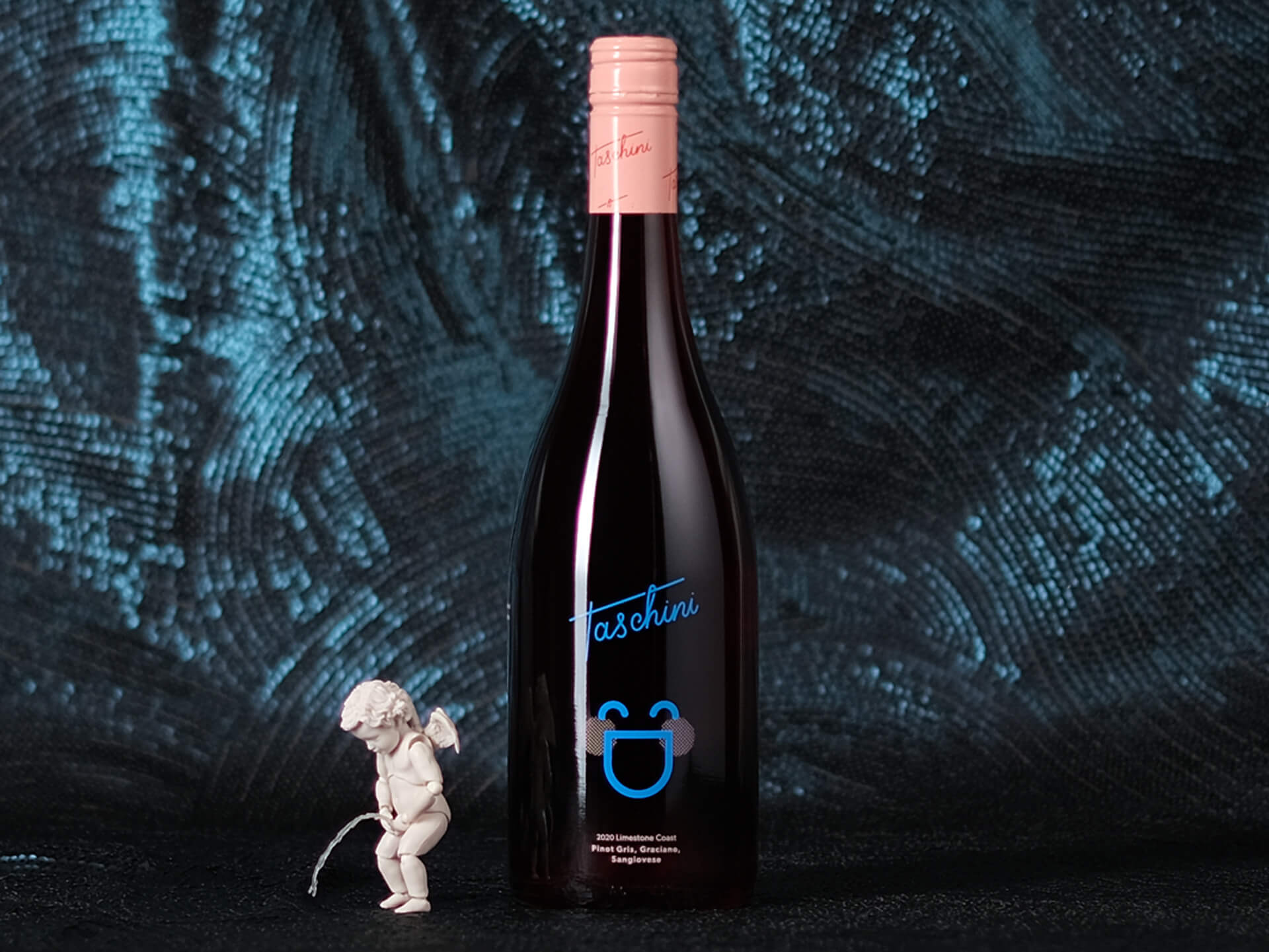This is the debut release for Matilda Innes’ Taschini label, which is committed to small-batch offerings – the name means ‘small pockets’ in Italian. With fruit from the Limestone Coast, this juicy light red is a riot of super-bright red fruits and florals, with a pleasing grip that adds even more refreshment value to the zippy acidity. Drink chilled.
Tasting note
Made from a co-ferment of pinot gris, graciano and sangiovese, this skips well out of rosé territory, being firmly garnet-red in colour, but it’s bright and zippy and certainly begs to be chilled. Summer berries, redcurrant jelly, rosehip tea, rosewater, musk, smashed cherries and cranberries are all in the mix, with that cranberry theme carried through to the palate along with red apple skin adding a drying pucker of tannin, giving this shape and direction, grapey flavours adding to the frivolity. This is fresh and bright, but with enough tannin to match it up with food. It’s a picnic/beach wine with a lot more going on than that tag suggests.
Themes of this wine
Chilling reds
There was a time that the only red you would consider chilling was a generic Beaujolais, but the reality is that room temperature is generally too warm for most red wine. If you’re not blessed with a climate-controlled cellar, a brief stint in the fridge will do most reds a favour, while some lighter reds can take more of a chill, and indeed many are now made to be drunk colder, if not exactly fridge cold. No wine, red white or sparkling is enhanced by the frosty temperature of a domestic fridge, but a stint on the bench will soon fix that. With red wines, those with bigger tannins will do less well cooler, while aromatic lighter bodied wines will generally perform well with a refreshing chill to them. Read more about chilling reds, here.
Pinot gris/grigio
Whether you call it pinot gris or pinot grigio, the variety has become an international star, pushing even sauvignon blanc out of the spotlight for those wanting a crisp, quaffable white without all the overt fruitiness. But the grape is much more versatile than that, making wines that can be dry and mineral or richly sweet and spicy, as well as skin-contact examples that are grippy and fragrant with red fruits and spices.
Graciano
Primarily grown in Spain’s north, and notably in Rioja, graciano is a blending grape that is used primarily to pair with tempranillo. It adds flavour depth and spice, while its suitability to hot conditions and late ripening tendency means that is retains acidity, correcting tempranillo’s notorious deficit.
Sangiovese
Sangiovese is Italy’s most important grape, by both volume and reputation, and it has travelled the world, establishing serious outposts across the New World. In Australia, sangiovese didn’t really start making inroads until the late 1980s, but with improved genetic material, it is now making quite an impression. The key flavour component mentioned when people talk about sangiovese is cherry, generally red, but sometimes black, with that primary profile generally accented with savoury notes of dried berries, hardy herbs, dried earth, leather and cedary notes.
Limestone Coast
The Limestone Coast is the South Australian viticultural zone that encompasses the wine regions of Mount Benson, Robe, Mount Gambier on the south-east coast. Extending inland along the Victorian border from Mount Gambier is the most famous of the regions, Coonawarra, followed by Wrattonbully, then Padthaway, which stretches towards the north-west in a narrow peninsula.



